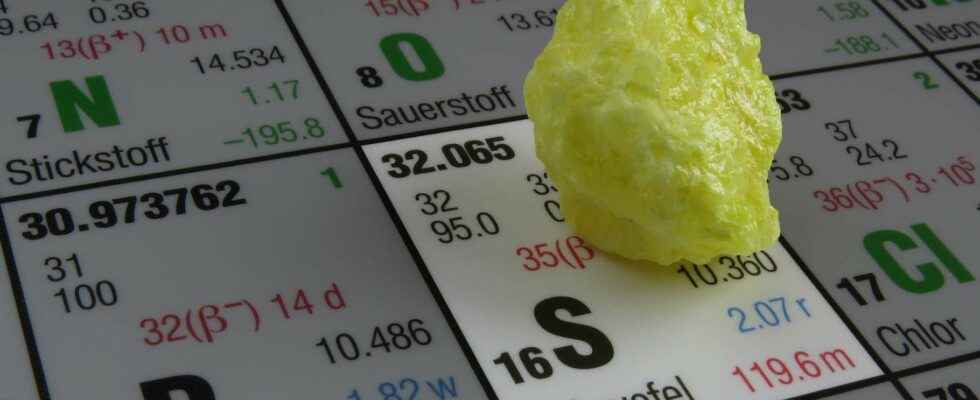When chemistry interferes in our daily lives, it is not always easy to know what it is about. For example, talking about sulfates and sulfites. A small letter that changes and that makes all the difference.
You will also be interested
[EN VIDÉO] What is green chemistry? Also referred to as sustainable chemistry, green chemistry was born in the 1990s. Its objective: to reconcile scientific innovation, consumer demand, economic efficiency and environmental constraints. Stéphane Sarrade, director of research in chemistry and process engineering, offers us a video definition.
Sulfates and sulfites. We are increasingly talking about these chemical compounds in our daily lives. But who are they really? First, perhaps, let’s point out that they are both derived from sulphur, a chemical element of symbol S. This is what brings them together.
Now let’s get to what sets them apart.
Sulfates, air pollutants
Sulfates are salts ofsulfuric acid (H2N/A4), compounds formed fromanions sulphate (SO42-) and other ions – the ion magnesiumlion potassium or the ion copper II, for example.
Sulphates are found in fertilizers, in particular. Copper sulfate is a powerful fungicide and bactericide which enters for example in the composition of the Bordeaux mixture.
Sodium lauryl sulfate is a powerful detergent found in liquids dishes or in shampoos.
But sulphates are also among the pollutants of our air. We then speak ofaerosols sulphates (SO4). The combustion of materials fossils as the coal where the fuel oil emits sulfur dioxide (SO2). While traveling in theatmospherethis is oxidized into sulphates under the combined action of water and nitrogen oxides (NO2) — from diesel engines and boilers. Sulphate aerosols make mists more persistent and more toxic pollution. Because their small size allows them to penetrate deep into lungs. What exacerbate the symptoms of the’asthma and cardiovascular diseases.
Sulphates are also found in water. Indeed, some rocks — such as gypsum — contain minerals of sulphate. When water passes through them, it dissolves these sulfates. It acquires in passing a bitter taste, but above all, laxative properties that can cause problems for those who consume it.
Sulfites sometimes cause intolerances
Sulfites — less oxidized than sulfates — are chemical compounds formed from the sulfite anion (SO32-) — or some esters formed from sulfurous acid.
They are found naturally in some fermented foods. But they essentially have antioxidant and antibacterial properties which make them widely used as preservatives. Especially in the wine — especially whites –, but also in beer — still sometimes –, dried fruits or pickles in a jar.
Some people have a sulphites intolerance. People with asthma, in particular. When they consume a certain amount, they can trigger an inflammatory reaction. Thus in Europe, the declaration of the presence of sulphite is compulsory as soon as their concentration reaches 10 mg/kg — or 10 mg/litre — of food.
Interested in what you just read?
